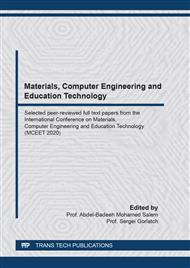p.151
p.161
p.167
p.172
p.179
p.184
p.194
p.202
p.211
A New Platform for Radio Astronomy Science Education
Abstract:
Radio astronomy telescope can get information from invisible universe by receiving electromagnetic waves. Difference from optical telescopes, there exists many difficulties for making the public understanding the radio astronomy phenomenon. In this paper, we will introduce a new platform for radio astronomy science popularization education in order to help public know radio telescope and radio astronomy. The platform consists of a 0.8meter parabolic antenna, a wide bandwidth low noise amplifier (LNA) and a Software Defined Radio (SDR) terminal. Based on SDR terminal which covers the band from 70MHz to 6GHz, we can get some strong emissions such as the Neutral hydrogen, solar radio bursts and so on in this band. People can carry out many radio astronomy experiments focusing on science popularization by this platform. This new science education tool can interest high school students in science and technology, also students can understand how radio telescopes works.
Info:
Periodical:
Pages:
179-183
Citation:
Online since:
April 2021
Authors:
Price:
Сopyright:
© 2021 Trans Tech Publications Ltd. All Rights Reserved
Share:
Citation:


